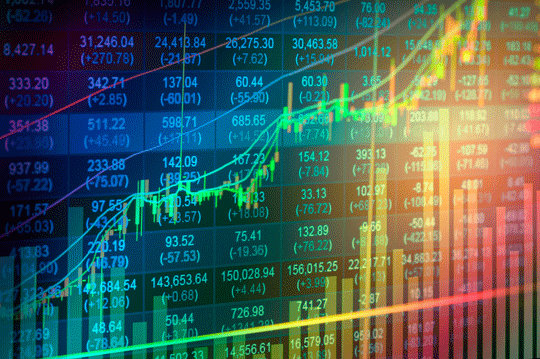The Trade of the Decade Is Dead
“The most important trade of the past decade is now reversing,” shrieks Charlie McElligott, head of Nomura’s cross-asset strategy.
As we revealed earlier this week, the “FAANG” stocks — Facebook, Amazon, Apple, Netflix, Alphabet (Google’s parent company) — have hemorrhaged a combined $952 billion since their recent peaks.
$952 billion of artificial wealth, that is, swept away to the Land of Wind and Dust… the graveyard of shattered illusions.
Amazon has absorbed the heartiest slating of the bunch.
Apple follows in train, trailed by Facebook, Alphabet… and Netflix.
If you wish to understand the outsized market influence of technology stocks, consider:
Apple, Amazon, Alphabet, Microsoft and Facebook have been the S&P’s five largest components… recently boasting a combined market cap exceeding $4 trillion.
These five technology stocks thus equaled the market cap of the index’s bottom 282 companies… combined.
In fact, the FANGs — minus Apple’s serpent tooth — were responsible for half the S&P’s 2018 gains through the first week of August.
Were you aware that at least a third of S&P stocks have wallowed in bear market territory this year — that is, down at least 20% from their previous highs?
Yet because of these technology stocks, the S&P worked a positive gain for much of the year — until this week.
Rarely before, we conclude, had so many investors owed so much… to so few stocks.
Wall Street poured into them… sat back on its oars… and let the current take markets to record highs.
But now these market supporters have cracked under the strain and throw off the burden of leadership.
They have left the vessel adrift, rudderless.
Will anyone seize the tiller?
No, suggests Goldman Sachs:
“Narrow bull markets eventually [lead] to large drawdowns.”
Narrow, because so few stocks were hauling the load… and no others are ready to take the slack.
Of chief concern to many analysts is the strategy of “passive investing.”
Passive, because it rises or falls with the prevailing tide.
All is glory while the tide rises.
But when the tide recedes… it recedes.
And the same few stocks that lifted all boats can wash the market out to sea, quick as thought.
Panic selling begets panic selling, and where it ends is a dreadful mystery.
Jim Rickards explains:
What matters is the array of traders, all leaning over one side of the boat, suddenly running to the other side of the boat before the vessel capsizes.
The technical name for this kind of spontaneous crowd behavior is hypersynchronicity, but it’s just as helpful to think of it as a herd of wildebeest that suddenly stampede as one at the first scent of an approaching lion. The last one to run is mostly likely to be eaten alive.
Or as analysts Lance Roberts and Michael Lebowitz of Real Investment Advice style it:
When the “herding” into ETFs begins to reverse, it will not be a slow and methodical process but rather a stampede with little regard to price, valuation or fundamental measures.
Importantly, as prices decline it will trigger margin calls, which will induce more indiscriminate selling… As investors are forced to dump positions… the lack of buyers will form a vacuum causing rapid price declines, which leave investors helpless on the sidelines watching years of capital appreciation vanish in moments.
Roberts and Lebowitz remind that investors lost 29% of their capital over a three-week span in 2008… and 44% over three months.
“This is what happens during a margin liquidation event,” they conclude.
“It is fast, furious and without remorse.”
Are markets in similar straits today?
We do not know if the market has stabilized, or if the selling will resume — “fast, furious and without remorse.”
Nor, for the matter of that, does anyone else.
We have argued previously against a general catastrophe this year.
We instead believed the ultimate reckoning may wait until next year… or the year following.
Why?
Because we first expected a “melt-up” — that final manic, incandescent phase bull markets enter before the inevitable meltdown.
Melt-up conditions do not obtain today… clearly.
Again, we do not know if we are witnessing the beginning of the end… or if new market leaders will emerge to chart a new, more sustainable bullish course.
Perhaps even the fallen FAANGs will rise from the depths… and reclaim the helm of leadership.
We will have our answers soon enough.
“Time discovers truth,” as said Seneca.
But that is also our greatest fear…
Regards,
Brian Maher
Managing editor, The Daily Reckoning



Comments: